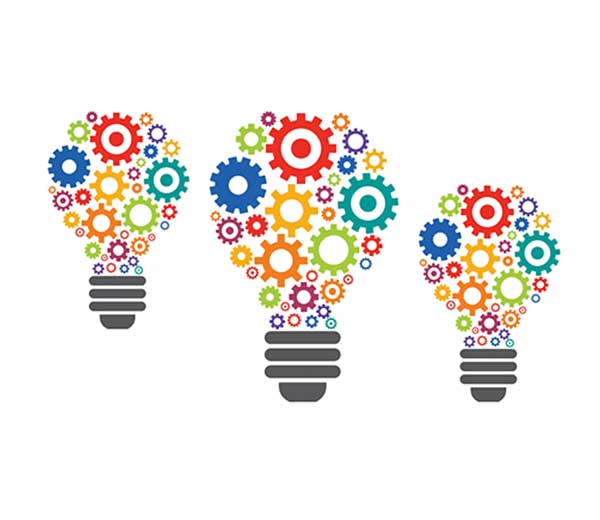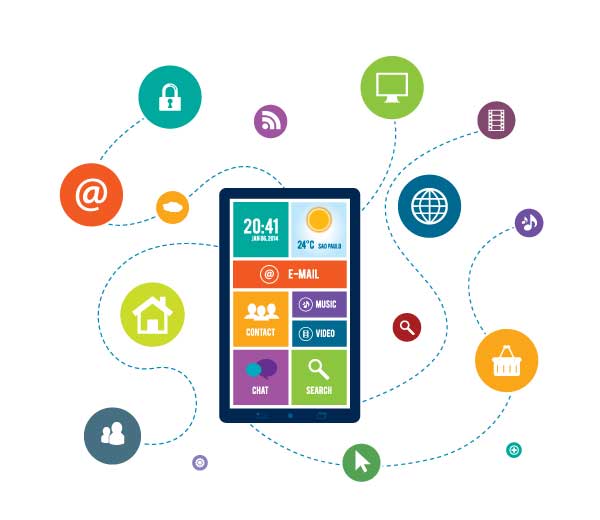
Graphic design
Graphic design is the process of visual communication, and problem-solving through the correct use of typography, space, image and color.
The field is considered a subset of visual communication and communication design, but sometimes the term ?graphic design? is used interchangeably with these due to overlapping skills involved. Graphic designers use various methods to create and combine words, symbols, and images to create a visual representation of ideas and messages. A graphic designer may use a combination of typography, visual arts, and page layout techniques to produce a final result. Graphic design often refers to both the process (designing) by which the communication is created and the products (designs) which are generated.
Common uses of graphic design include identity (logos and branding), publications (magazines, newspapers and books), print advertisements, posters, billboards, website graphics and elements, signs and product packaging. For example, a product package might include a logo or other artwork, organized text and pure design elements such as images, shapes and color which unify the piece. Composition is one of the most important features of graphic design, especially when using pre-existing materials or diverse elements.
Graphic design, also known as communication design, is the art and practice of planning and projecting ideas and experiences with visual and textual content. The form of the communication can be physical or virtual, and may include images, words, or graphic forms. The experience can take place in an instant or over a long period of time. The work can happen at any scale, from the design of a single postage stamp to a national postal signage system, or from a company?s digital avatar to the sprawling and interlinked digital and physical content of an international newspaper. It can also be for any purpose, whether commercial, educational, cultural, or political.
Design that?s meant to be experienced in an instant is the easiest to recognize and has been around the longest. For over a hundred years, designers have arranged type, form, and image on posters, advertisements, packages, and other printed matter, as well as information visualizations and graphics for newspapers and magazines. Motion graphics are equally predetermined and crafted, but are meant to be experienced over a fixed time span, such as for the opening credits of a movie or an online video meant to accompany a newspaper article.
The design of books and magazines also has a long history. Whether physical or digital, these are objects that are meant to be enjoyed over time, during which the reader has control over the pace and sequence of the experience. In books, the content usually comes before the design, while in magazines, the design is a structure that anticipates written and visual content that hasn?t yet been created. Some commercial websites or exhibition catalogues also fit in this category, as do digital or physical museum displays that show information that doesn?t change. All have fixed content, but the user or reader determines their own path through the material.
Many designers also produce systems that are meant to be experienced over time, but aren?t confined to the making of objects. Wayfinding, which is a form of environmental graphics, refers to the branding and signage applied throughout and on buildings. While each sign or symbol in a public or private building is a work of design, they?re all part of a larger system within the building. The design of the system?the relationships between all of those parts?is where the designer brings value. Similarly, while all of the artifacts of a commercial or institutional brand, such as a business card, sign, logo, or an advertisement are individual expressions of design, how those are experienced together and over time is the design work. No part of it has been created without considering the others, or without thinking through how a target customer will encounter and then develop a relationship with that brand.
Designers are also responsible for interactive designs where the content is fluid, sometimes changing minute to minute, as well as interfaces that help users navigate through complex digital experiences. This work differentiates itself by adding another element: responding to the actions of the viewer. Editorial design for web and mobile is the most tangible example of content-driven work in this area, including publication websites, mobile apps, and blogs. Some design involves the presentation of streaming information, also known as data visualization. Other designers work on digital products, which are digital services or platforms that can be brought to market. Product design for web and mobile is related to software design. Sometimes different designers work on the user interface design (UI), which mostly refers to the individual layouts of pages, and the user experience design (UX), or the total experience of the user as they move through a website or app.
Type design carries aspects of almost all of these things. While the form of a single letter has meaning, a typeface, like a brand, is also composed of the relationships between characters that work together to create meaning. And like software, typefaces are licensed and can be installed on individual computers.
Depending on the scale of the context in which a designer works, the work may include one, some, or all of these things in the course of a year. Larger companies, agencies, teams, or studios may lean towards specialization, while smaller studios and groups may need to have each individual capable, if not an expert, in multiple areas.
Graphic Design Graduate Programs with Career Information
Graphic design is a field that combines several disciplines, including typography, photography, art and computer technology. Study at the graduate level is often designed to further previous education through studio work, independent research and internships.
Essential Information
While a Master's degree in graphic design has traditionally been considered the field?s terminal degree, Doctor of Philosophy (Ph.D.) programs have been introduced for students seeking further study. Students at the graduate level often have the freedom to customize their own programs of study through studio design courses, research opportunities and work experiences.
- Program Levels: Master's Degree, Doctor of Philosophy (Ph.D.)
- Prerequisites for Master's Degree: Bachelor?s degree, portfolio of work
- Prerequisites for Ph.D.: Master's degree in the field
- Other Requirements: Internships (Master's degree), dissertation (Ph.D.)
Master's Degree in Graphic Design
Master's degree programs are the most common graduate-level programs in the field of graphic design. In many cases, students entering these graduate programs already earned an undergraduate degree in graphic design. Students in graphic design Master's degree programs split their time between classroom study, studio work and internships. Classes focus on both practical and theoretical elements of graphic design.
- Modern graphic design
- Typography
- Graphic design history
Ph.D. in Graphic Design
Ph.D. programs in graphic design, though rare, offer students the opportunity to complete advanced study and research in the field. These programs are often interdisciplinary, drawing on related fields like architecture, studio art and Web design. Some students use their time in a graphic design Ph.D. program to advance their existing design careers. Coursework, where required, most often includes study of design concepts not studied while pursuing a Master's degree. Students will complete courses that focus on topics like:
- Graphic design teaching practicum
- Sustainable design
- Conceptual design and model construction
- Advanced graphic design research
Popular Career Options
Graphic designers often work in fields such as journalism and publishing, shaping the design and appearance of magazines, newspapers and websites. Career options for graduates include:
- Technical illustrator
- Multimedia design and production
- Web design artist and programmer
- Print media layout artist
- Photoshop artist
With a Ph.D. in graphic design, students can pursue leadership positions in a variety of fields, while many who pursue a doctoral graduate degree are interested in education.
- Landscape architect
- Industrial designer
- Sustainable design consultant
- Professor of graphic design or a related field




